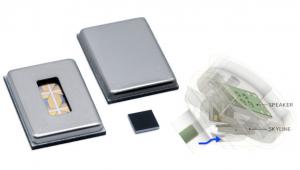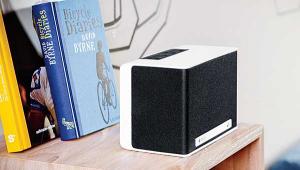Great article. Good to hear from the experts about sub design and setup.
Subwoofers: The Guts and the Glory Page 2
As SVS’s Mullen said, “If you look at a sealed-box sub like our SB13, the rolloff slope is shallower, and there’s less phase rotation and ringing in the time domain. Subjectively, people will perceive that as faster/tighter bass with less overhang. A bass-reflex sub will typically have a much more abrupt transition at the rolloff . If you plot the response in the time domain, you will see distinct ringing at or near the corner frequency.”

Vodhanel pointed out that the deeper a sub’s response is, the less you have to worry about group delay because the effect is pushed down to lower frequencies, so it doesn’t involve as much of the audible band. “If you get it to extend as deep as possible, you’re gaining two things: extension and overall sound quality,” he said. “You’ll have less ringing, and the impulse response will be tighter.”
However, Axiom’s Welker dismissed the idea of group delay as a serious subwoofer issue. “There’s no good data showing perceivable levels of group delay at low frequencies. All the papers that have been written only deal with group delay at mid and high frequencies. We’ve simulated different group delays with digital signal processing, and in controlled blind testing we haven’t found any correlation between added group delay and a decrease in sound quality.”
Said Hagen: “Making a judgment [about sealed versus ported subs] based solely on alignment is unfair. I’ve heard ported systems that were very tight and had no phase issues. Just because a speaker has been designed with a port in it does not instantly equate to an awful or objectionable phase response.”
What Kind of Amp?
Many, perhaps most, of today’s subwoofers use a high-efficiency amplifier, which requires little or no ventilation and does not require large transformers and heatsinks. The most popular type of high-efficiency amp is Class D, in which the output transistors switch either fully on or fully off at ultrasonic frequencies, and a filter circuit at the output extracts the desired audio signal from the high-frequency switching pulses. Other types, Class G and Class H, employ a variant of a standard Class AB amp fitted with a power supply that uses multiple power rails (Class G) or continuously tracks the level of the incoming signal (Class H) so it can provide only as much rail voltage as needed moment to moment.
Another advantage of high-efficiency designs is that their compact size makes it practical to fit, say, a 1,000-watt amp into a small subwoofer. This is especially important in small subs that use DSP to boost bass output. For example, with a sealed-box sub that has an anechoic response that is –12 dB at 40 hertz, adding in the natural bass rolloff of –12 dB per octave means you need 16 times as much power to produce a flat measurement under anechoic conditions at 20 Hz as you do at 80 Hz.
Many audiophile-oriented subs use traditional Class AB amps, because some engineers and audiophiles believe the sound quality is superior. Not surprisingly, I heard some disagreement about this.
“The sweet spot is in high-efficiency topologies like D or H, because dealing with a high-powered Class AB amp inside a subwoofer enclosure is difficult,” Welker said. “There’s also a lot of concern about power consumption these days. With Class D, standby power can be easily a tenth of that of a similarly powered Class AB amp. So all the amps we use are Class D. I think they’re every bit the equal of a good Class AB amp, even used full-range.”

Asked if he had any concerns about the sound quality of high-efficiency amps, Vodhanel replied: “When we first tried a digital amp, circa 1999 or 2000, the big worry was sound quality. But in every objective test we did—impulse response, group delay, compression, everything we could think of—sound quality issues didn’t show themselves.”
Hsu disagreed, citing a concern often raised with Class D amps: damping factor, or the ratio of the speaker impedance to the amp’s output impedance. The higher the damping factor, the greater the “braking force” it can exercise on the moving woofer cone.
“Most o the Class D amps I’ve looked at have a poor damping factor, because they have a choke [an inductor, or filter component] at the output to keep high frequencies from getting out,” Hsu explained. “So I feel Class AB still makes the most sense. A switching power supply is fine, though, and I have no problem with Class G or H because those are just Class AB with multiple rails. If I come across Class D with a good damping factor, though, I’d be happy to try it out.”
However, Welker believes that designing a Class D amplifier, using a switching power supply with a switching amp, presents problems. “With a switching supply, if it’s rated for a certain power, that’s all you’re going to get. A linear supply can deliver peak current well beyond its rated power. It’s also proven that they last. You can find amps from the 1950s where the transformers are still working.” This is why Axiom uses linear power supplies for their Class D amps.
DSP Tuning Tricks
Not long ago, digital signal processing was too expensive for most subwoofers, but now you can find it even in budget subs. It’s used not only for tweaking frequency response, but also for compression and limiting, subsonic filtering, crossover functions, and special
sound modes. I was curious to learn how, with so much processing power in their hands, our experts prefer to tune their subs.
- Log in or register to post comments


We offer assistance in all subjects. Start relying on our best essay here services today!






















































